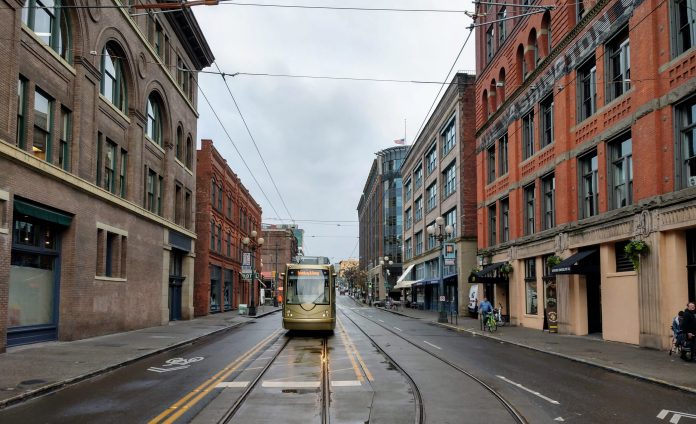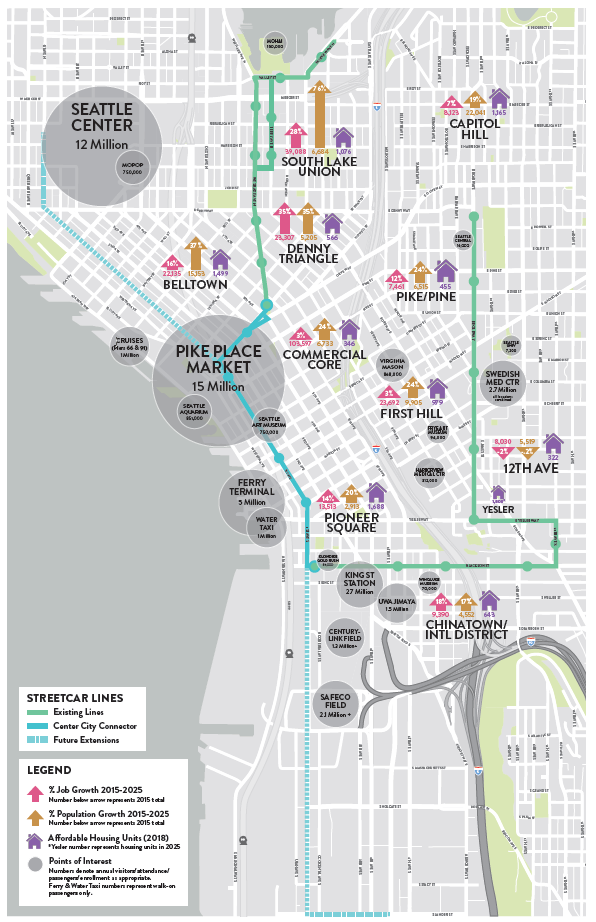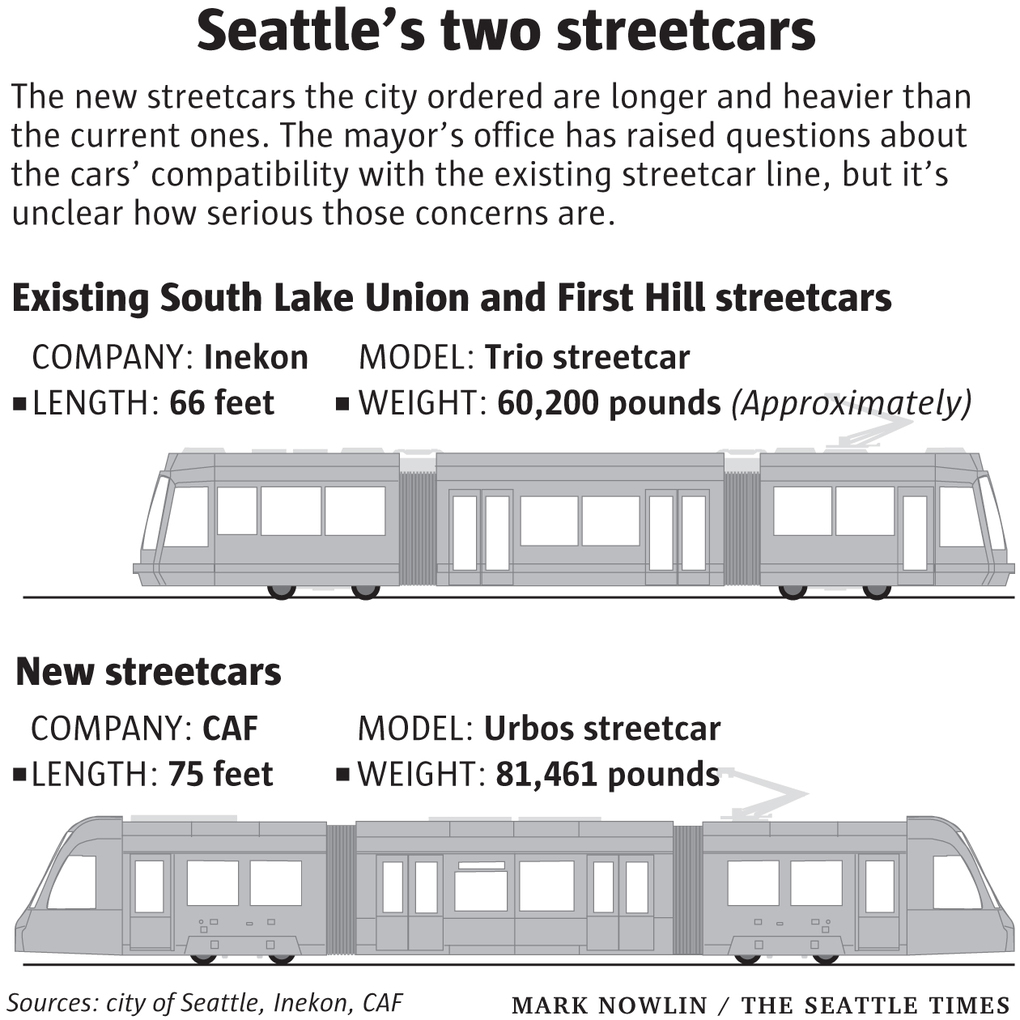
Yesterday Mayor Jenny Durkan released the long-awaited engineering review of the Center City Connector streetcar project and announced she was supporting the project. The Mayor pledged she’d work with the Seattle City Council to find funding to close the budget shortfall, estimated at $65 million for the Seattle Department of Transportation (SDOT) portion.
“[W]e will make historic investments in building a city of the future, like our new waterfront park, a new convention center, and a reborn Seattle Center Arena,” Mayor Durkan said in a statement. “As we reconnect downtown with our new Waterfront for All, we have the opportunity to create a downtown with fewer cars and where residents, workers, and visitors can walk, bike, and take transit. A unified streetcar route provides a unique opportunity to build on our investments for the next generation.”
While finding $65 million additional dollars and securing the $75 million in grants from a reticent Federal Transit Administration (FTA) remain major hurdles for the project, the Mayor’s endorsement represents the clearing of another hurdle–10 months of review in the making.
However, the finish line has been pushed farther out to 2025–five years later than the original 2020 target and much later than the 2021 target that still had seemed possible when Durkan announced she was halting the shovel-ready project to do an independent review. That review, conducted by KPMG, confirmed robust ridership projections, but spurred an engineering review, contracted to Parsons Brinckerhoff, and released yesterday (executive summary of vehicle/project interface and capital and operating cost update). The review showed even higher first-year ridership of 7.1 million, which works out to about 23,000 average weekday boardings.
Overrun Double Standard: Viaduct vs Streetcar
The Center City Connector budget is now being billed at $285 million, although $78 million of that is underground water and utility work that would need to happen eventually anyway. For perspective, that means the entire streetcar budget is still less than just the cost overrun of the SR-99 viaduct replacement project, tallied at $223 million as the megaproject has ballooned past $4 billion in all. Will leaders be as steadfast through streetcar project snags as they were during the saga of the SR-99 tunnel?
Murray’s Many Mistakes
Mayor Durkan criticized her predecessor for poor management of the project saying the Murray administration had relied on guesstimates and insinuating the project had been rushed. She portrayed those mistakes as setting the project on a collision course with the FTA.
“We wouldn’t have had the delay if they’d done proper planning and had used proper controls on this project, period,” Mayor Durkan said in an interview with David Gutman. “I don’t want to call it back of the envelope, but it was a heck of a lot closer to a guesstimate than responsible budgeting.”
Trump’s FTA Gumming Up the Works
Reading between the lines, the Trump’s FTA has also been throwing wrenches in the project. The Trump administration has been requiring the projects prove they have all other funding secured before dispersing federal grants. This sets a very challenging bar for cash-strapped transit agencies, while favoring highway-building state transportation departments, which tend to have much greater resources at their disposals.

Streetcar Coalition Cheers Decision
The Seattle Streetcar Coalition hailed Mayor Durkan’s decision to advance the project, which kept promises made to First Hill and the International District.
“We are very happy that the promises made during construction in the CID are being honored,” said Maiko Winkler-Chin, executive director of the Seattle Chinatown International Preservation and Development Authority (SCIDpda). “Our community was told our pain and suffering during the construction phase would be worth it because we’d have a connected system to benefit our residents and businesses. With the First Avenue line, we will have a connected, functioning system and this community will actually see the promised benefits.”

The coalition pointed out the connected streetcar line will provide service to more than “8,000 new units of affordable housing going in by 2025” along the route. The route would serve a diverse cross-section of Seattle.
“This is a big step towards building a city of the future! This vital link will connect our growing communities and keep downtown Seattle vibrant and moving,” said Keiko Budech, communications manager for Transportation Choices Coalition, in a statement. “The streetcar will provide frequent and reliable service that will boost ridership and get more people where they need to go. The next step is to work with City Council to find funding solutions and quickly move this project forward to meet our region’s growing transportation needs.”
Engineering Work to be Done

The Parsons report identifies about $11 million to $17 million in needed vehicle interface costs, which are a result of the longer and heavier CAF Urbos streetcars selected. The Urbos are considered a superior streetcar with greater passenger capacity so the change makes sense, but the midstream switch did complicate engineering for the project. Bridge strengthening is needed for South Jackson Street between Third and Fifth Avenues. Rebuilding the Fourth Avenue viaduct would likely be required for the cut-and-cover option in the Fourth Avenue alignment of the second Downtown transit tunnel for Ballard Link, perhaps suggesting a joint solution may be possible if that alignment is chosen. The platform, tail-track, and maintenance facility changes relate to the greater length of the new streetcars, which are about nine feet longer.

On top of those vehicle interface costs, $17 million in engineering analysis has been added to the budget and another $10 million in SDOT construction costs from delaying the project a few more years. Parsons estimates utility costs will be $23 million higher, too.
Some transit advocates have floated raising the commercial parking tax as a solution to close the funding gap and from an urbanist perspective it’s hard to beat discouraging private automobile trips to Downtown Seattle. That solution would need five votes on the Seattle City Council. Some other funding resources may require going to voters.
The Interim Period Until Center City Streetcar Opens
Waiting until 2025 to complete the streetcar line would be a loss for riders, who could sorely use another reliable option with transit-only lanes through Downtown. It also complicates operating budgets for the two existing unconnected lines. The Parsons report predicts their operating costs would continue to increase, growing to $7.37 million in “City subsidy” by 2023.

Sound Transit has provided a $5 million annual subsidy to the First Hill Streetcar line as compensation for cutting the First Hill station from the University Link extension, but that subsidy is scheduled to expire after 2023. The sting of losing the station doesn’t go away in 2024, especially lacking a Downtown streetcar connection, so arguably Sound Transit should continue to support First Hill streetcar operations. That would need to be negotiated though. Adding streetcar funding to the Seattle Transportation Benefit District, due for renewal in 2020, could be another way to support operating costs.
The delay forces the City to operate longer without the Center City Connector to triple streetcar ridership and buoy the line past 20,000 daily riders, alleviating the operating cost issues. KMPG’s analysis suggest the completed connection could help the streetcar system recover 52% of its operating costs at the farebox, much higher than the average bus line and existing stubby streetcar lines.
Instead the disconnected streetcar lines will have to continue to take the slings and arrows until the vital missing link is completed. “Our children and our grandchildren, years from now, if we don’t make this connection will look back and say, ‘What were they thinking?’” Downtown Seattle Association president Jon Scholes said.
Will our political leaders stick behind the streetcar as the Durkan administration attempts to overcome Murray’s blunders, Trump’s roadblocks, and some of their own tripping over their own feet? I hope the answer is yes, but we may have some tumultuous years ahead of us.
Doug Trumm is publisher of The Urbanist. An Urbanist writer since 2015, he dreams of pedestrian streets, bus lanes, and a mass-timber building spree to end our housing crisis. He graduated from the Evans School of Public Policy and Governance at the University of Washington in 2019. He lives in Seattle's Fremont neighborhood and loves to explore the city by foot and by bike.

